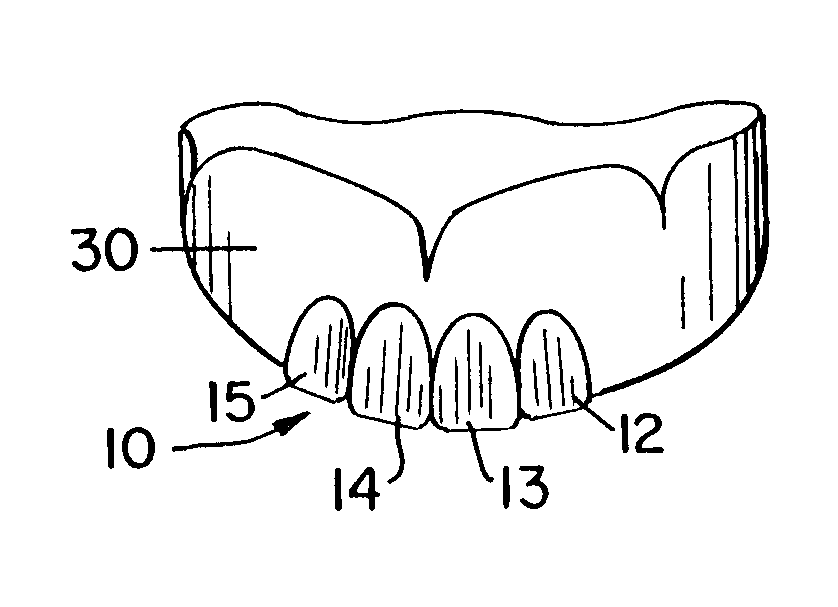Facial registration tool
a facial registration and tool technology, applied in dental prosthetics, medical science, impression caps, etc., can solve the problems of affecting the appearance, speaking, and other functions of people with dentures, and the challenge of proper tooth placement is further complicated
- Summary
- Abstract
- Description
- Claims
- Application Information
AI Technical Summary
Benefits of technology
Problems solved by technology
Method used
Image
Examples
Embodiment Construction
FIG. 1 illustrates an embodiment of a facial registration tool 10 in accordance with the present invention. Facial registration tool 10 includes a simulated upper left lateral incisor 12, upper left central incisor 13, upper right central incisor 14, and upper right lateral incisor 15. The incisal end 16 of the central incisors 13-14 may extend slightly farther, such as 1 / 2 mm, than the incisal end 17 of the adjacent lateral incisors 12 and 15 to simulated the appearance of natural teeth. The appearance of individual teeth as viewed from the front is provided by the shape and contour of the teeth, which form identifiable separations or interproximal spaces 18 between adjacent teeth. The necks or gingival end 19 of the simulated teeth 12-15 appear without the root structures that are present in natural teeth. The facial or labial surface 26 slopes inwardly at both the gingival end 19 and the incisal end 17 as would natural teeth.
Referring to FIG. 2, facial registration tool 10 is sho...
PUM
 Login to View More
Login to View More Abstract
Description
Claims
Application Information
 Login to View More
Login to View More - R&D
- Intellectual Property
- Life Sciences
- Materials
- Tech Scout
- Unparalleled Data Quality
- Higher Quality Content
- 60% Fewer Hallucinations
Browse by: Latest US Patents, China's latest patents, Technical Efficacy Thesaurus, Application Domain, Technology Topic, Popular Technical Reports.
© 2025 PatSnap. All rights reserved.Legal|Privacy policy|Modern Slavery Act Transparency Statement|Sitemap|About US| Contact US: help@patsnap.com


